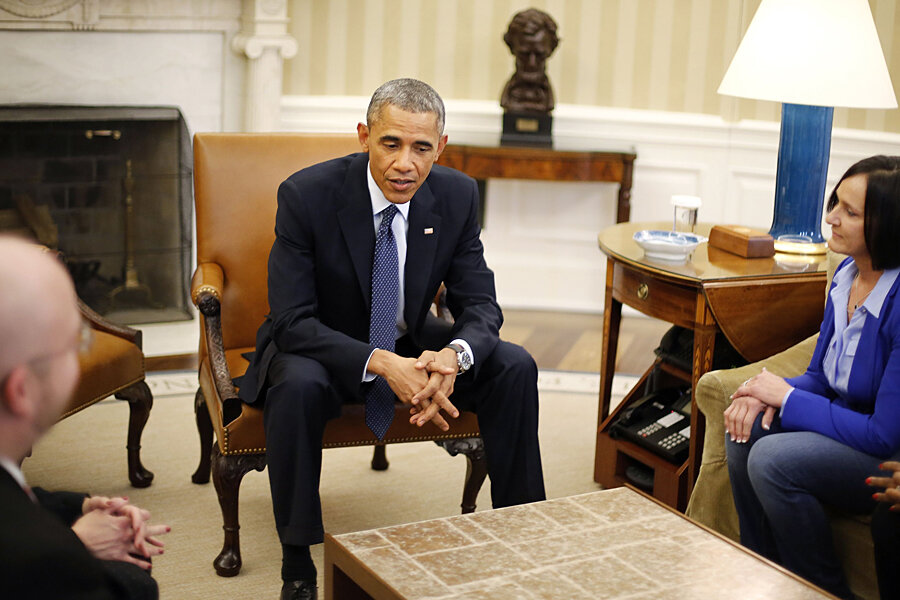Is Obama closing tax loopholes or just curbing Congress' generosity?
In his upcoming budget, President Obama will propose to strip away the “loopholes” that permit wealthy individuals to accumulate large amounts in tax-favored retirement plans. He would prohibit a taxpayer from contributing any more to IRAs or other qualified retirement plans once his or her accounts reach a combined value of $3.4 million.
For sure, $3.4 million is a lot of retirement savings. But many high-income workers can get there thanks to Congress’ repeated, explicit, and ongoing generosity, not because they exploit some obscure loopholes.
Currently taxpayers can participate in a wide array of generous arrangements authorized expressly by Congress (presumably with full understanding of the consequences). And, in recent years, Congress aggressively expanded both individual and employer-sponsored retirement plans—often permitting participation without income limits.
An individual taxpayer now can contribute annually up to $5,500 to an IRA (increased from $2,000 in 2000) and, with contributions from his or her employer, up to $53,000 to an employer-sponsored plan (increased from $30,000 in 2000). Additionally, taxpayers age 50 or older may contribute an extra $1,000 to an IRA and $6,000 to an employer plan each year to “catch up” on their retirement savings. Finally, an employer may also contribute to an employee’s defined-benefit plan—and these contributions often exceed $50,000 annually (the limit turns on actuarial calculations). In sum, we now have traditional IRAs, Roth IRAs, SEP IRAs, SIMPLE IRAs, 401(k)s, 403(b)s, 457(b)s, and a range of other employer-sponsored plans (both defined-contribution and defined-benefit plans).
By making maximum contributions and investing well, some taxpayers will hit the $3.4 million cap. To illustrate, a taxpayer (or his employer) who contributes a total of $100,000 a year to an IRA, a defined-contribution, and a defined-benefit plan, and earns 10 percent annually, will reach the cap within 20 years (assuming the taxpayer, eventually, rolls over the contributions an IRA). The Government Accountability Office (GAO) estimated that more than 45,000 taxpayers now have IRAs worth more than $3 million, without counting amounts still in employer-sponsored plans.
GAO speculated that many taxpayers contributed property that was initially valued at nothing but later worth a great deal. However, GAO could not quantify how many taxpayers did this (and GAO failed to consider the impact of rollovers to the IRAs from both defined contribution and benefit plans).
Stuffing an IRA with property that is valued at nothing is an egregious attempt to exploit a real loophole. GAO noted that some taxpayers contribute founder’s stock or carried interest to their IRAs—which can create massive values later (remember Mitt Romney’s disclosure of his $102 million IRA in the last Presidential race?). GAO estimated that about 300 taxpayers had IRAs in excess of $25 million, which presumably could only be accomplished by stuffing the accounts with property that was valued suspiciously.
Congress could end these games by permitting contributions of only cash and publicly-traded securities. Or the IRS could audit more aggressively the valuation of property that is contributed to an IRA.
Finally, if Congress really wants to reverse the direction of recent retirement policy, it could lower the contribution limits for retirement plans, reduce the array of retirement choices, impose tighter income limits on contributors, and end bequests of IRAs. Obama correctly highlighted the ability of some taxpayers to accumulate large amounts of retirement savings—but labeling large IRAs and retirement plans “loopholes” mischaracterizes Congress’ generosity (or profligacy).
The post Is Obama Closing Retirement Savings Loopholes or Just Curbing Congress’ Generosity? appeared first on TaxVox.






